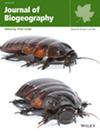Determining the species distribution and factors shaping it is a major challenge for conservation planning. Ecological niche models (ENMs) facilitate the comprehension of how environmental factors may influence species occurrence, providing spatially explicit information relevant to conservation. Therefore, our aim was to estimate the potential distribution of key habitat-forming Mediterranean gorgonians, whose conservation would protect many co-occurring species.
Mediterranean Sea.
We modelled the potential distribution of the Mediterranean gorgonians Eunicella singularis, Eunicella cavolini, Paramuricea clavata and Corallium rubrum, using an ensemble ENM that combines nine algorithms. An extensive dataset of presence records (> 4378) collected through scientific surveys and citizen-science was intersected with oceanographic and topographic information within the coralligenous habitat depth range (< 150 m). This approach was used to map the habitat suitability of the study area for each species, assess related uncertainty, identify the most important factors shaping their distribution, and evaluate the overlap with the current network of Marine Protected Areas.
The model identified higher habitat suitability for the occurrence of each gorgonian species in the NW Mediterranean, with roughness and temperature as the main drivers of their distribution. Conversely, the poorly sampled SE Mediterranean showed low habitat suitability, although there is a greater uncertainty associated with this estimate. The combined potential distribution of the four species is estimated to cover a quarter of Mediterranean shallow and mesophotic waters, but only 19% was included within protected areas.
The habitat suitability and uncertainty maps provide a valuable tool for the conservation and management of Mediterranean gorgonian species by offering spatially explicit information critical for marine spatial planning. The model estimates of habitat suitability showed low uncertainty for most of the study area, with few exceptions in the SE Mediterranean. Further studies, particularly in the SE Mediterranean will contribute to validate these results and will provide new information to improve future modelling efforts.



